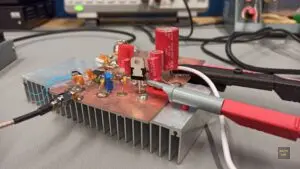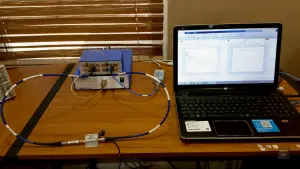VHF LDMOS Power Amplifier Experiments

The NXP MRF101 series high ruggedness N-channel Enhancement-mode lateral MOSFETs promise over 100 Watt CW output power and slightly over 20 dB gain from 1.8 MHz all the way up to 250 MHz. Their mismatch insensitivity for a VSWR of greater than 65:1 without significant device degradation makes these devices extremely interesting for amateur radio operators. While there a plenty of designs for the HF + 6m Bands on the internet, I wanted to see what it takes to use them on the 2m VHF band.


